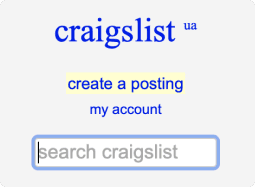What Is a Large-Scale Web Scraping – Highlights and Challenges
Find out what a large-scale web scraping is
and what challenges you may face
while scraping large data sources —
here, on the DataOx blog.
Ask us to scrape the website and receive free data sample in XLSX, CSV, JSON or Google Sheet in 3 days
Scraping is the our field of expertise: we completed more than 800 scraping projects (including protected resources)
Table of contents
Estimated reading time: 8 minutes
Introduction
Have you ever thought about how an enormous volume of data is produced and distributed online every day by various users, institutions, or applications? Of course, you think that search engines are the simplest way to access this big data. But the point is that such an approach requires a lot of time and manual resources.
Let’s imagine there is a website with more than 5,000 pages, with about 20 items on every page. To get even little information, you need to enter every single item on every page, which makes 20*5000=100 000 get requests. Here is where large-scale data extraction from the web comes into play.
In this article, we’ll find out what large-scale web scraping is and what peculiarities and challenges it presents.
Large-Scale Web Scraping at a Glance
We have already stated that large-scale extraction can’t be processed and stored manually. Large-scale web scraping means running many scrapers through one or more websites at the same time. Here, you need an automated and robust framework to collect information from various sources with minimal human effort.

So let’s differentiate between the two kinds of large-scale web scraping: parsing content from a large data source like LinkedIn or Amazon, and crawling content from 1000+ different minor web sources at once.
Scraping a Large Data Source
When you need to scrape a very large data source, things start to get complicated, especially where detail accuracy really matters. Let’s imagine you need to collect figures from the New York Stock Exchange that generate about one terabyte of new data per day. Can you imagine the scale and importance of the data quality? The same is valid for dealing with social networks like Facebook or LinkedIn, which generate over 500 terabytes of content every day.
But that’s not all. Scraping at scale often requires extracting content at top speeds without compromising quality, because time is usually limited. So, we can define two fundamental challenges while scraping a large content source: data quality and speed.
Let’s see what other challenges we may run across while parsing large sources.
Proxy services
The most necessary requirement for crawling large-scale content is the use of proxy IPs. For this reason, you should have a list of proxies to implement IP rotation, session management, and request throttling, to keep your proxies from blocking.
Most companies providing large-scale crawling solutions have developed and maintain their internal proxy management infrastructure to care for all the complexities of managing proxies. So, by hiring such companies, you will focus solely on analyzing the content and not managing proxies.
Bot detection and blocking
If you are parsing large complex websites, you will run into anti-bot defensive measures, such as Incapsula or Akamai, which make content extraction more difficult. Today, almost every large website practices anti-bot measures to monitor and distinguish bots from human visitors. These anti-bot measures may not only block your crawlers but can also impact their performance and make crawling both difficult and incorrect.

The point is: to get the required result from your crawlers, you need to employ a reverse engineer toward anti-bot measures and design your crawlers to counteract them.
Data warehouse
When you are doing large-scale scraping, you’ll need a relevant storage solution for your validated data. If you are parsing small volumes, a simple spreadsheet may be enough; you may not need dedicated big storage, but in the event of large-scale data, a solid database is required. There are several storage options like Oracle, MySQL, MongoDB, or Cloud storage you may choose based on speed and frequency of parsing.
But keep in mind that ensuring data safety requires a warehouse with a strong infrastructure, which in its turn requires a lot of money and time for maintaining.
Scalable and distributed web scraping architecture
The next challenge is building a scalable scraping infrastructure to provide the required number of crawling requests without takedown in performance. As a rule, a sequent web scraper makes requests in a loop, taking 2-3 seconds to complete. This approach works if you need to crawl over 40,000 requests per day. But if you need to scrape millions of requests every day, a simple scraper cannot handle this. It will require a transition to required data crawling.
For parsing millions of pages, you need several servers and a method to distribute your scrapers across these servers by communicating with each other. There are URL Queue and Data Queue distributing URLs and content among the scrapers running in different servers by using Message Brokers.
Maintenance performance
It is a golden rule: web scrapers need periodic adjustments. Even a minor change in the target website may impact large-scale parsing because of which scrapers might give invalid data or be simply crushed.
In such cases, you need a notification mechanism to alert you about issues that should be fixed, either manually or by deploying a special code to make scrapers repair themselves. By extracting large amounts of information, you always have to look for methods to decrease the request cycle time and increase crawlers’ performance.
For this reason, you need to enhance your hardware, crawling framework, and proxy management to provide constant optimal performance.
Extra tips for scraping large websites
Before we go any further, here are some additional tips to keep in mind while extracting data on a large scale.
- Cache pages – While parsing large websites, always cache the pages you visited in order to avoid overloading the website if you need to parse it again.
- Save the URLs – Keeping a list of previously selected URLs is always a good idea. If your scraper crashes, let’s say after 80% extraction of the site, completing the remaining 20%, without those URLs you will take you extra time. Make sure you save the list to resume parsing.
- Split scraping – The extraction may become easier and safer if we split it into several smaller phases.
- Keep websites from overloading – Don’t send too many requests at the same time. Large sources use algorithms to identify parsing, and numerous requests from the same IP will detect you as a scraper and send you to the blacklist.
- Take only the necessary – Don’t follow every link and extract everything unless it’s necessary. Use the right navigation scheme to scrap only the required pages. This will save you time, storage, and capacity.
Scraping over 1,000 Websites
When your task is to scrape a huge number of websites every day, again your fundamental challenge is data quality. Let’s imagine you are in a real estate business and to stay tuned you need to scrape content from about 2,000 web pages every day. The chance of getting the duplicated data is about 70%. The best practice is to test and clear extracted content before sending it to storage. However, we’re jumping ahead.
Let’s find out what challenges you may face while crawling 1,000 or more pages simultaneously.
Data management
As already stated, data accuracy is the number one challenge when dealing with parsing a thousand pages per day in the same theme. At the beginning of any extraction task, you always need to understand how you can achieve data accuracy.
Let’s consider the following steps:
- Set requirements – If you do not know what kind of content you need, you can’t verify the quality. First, you need to specify for yourself what data is valid for you.
- Define the testing criteria – The next step is to define what should be checked and cleared before storing in the database (duplications, empty data, hieroglyphic symbols, etc).
- Start testing – Take note: testing approaches may differ based on the scraping scale, complexity of requirements, and number of crawlers. There is no QA system that works 100%, so it also requires manual QA to ensure perfect accuracy.
The other key factor of any large-scale web scraping quality assurance is a monitoring of the scrapers in real-time, allowing you to detect potential issues with quality.
Dynamic websites
There are constantly changing websites; new structure, extra features, new types of content. All these changes may be a challenge in case of large-scale extraction, particularly in the event of 1,000 or more websites, and not only by means of complexity, but because of time and resources. You should be ready to face hundreds of constantly developing websites that can break your scrapers.
To solve this issue, have an extra team of crawl engineers that will create more robust scrapers to detect and deal with changes and QA engineers, ensuring that clients will get the reliable data.
Captchas, honeypots, and IP blocking
Captchas are one of the most common anti-scraping techniques. Most scrapers cannot overcome captchas available on websites, but with the help of specially designed services, it becomes possible. To use such anti-captcha tools is mandatory for scrapers, though some of them may be rather expensive.
As scrapers get smarter, developers are inventing honeypots to prevent websites from parsing. There are many invisible links blended with background colors that scrapers will follow, ultimately blocking them during the extraction. By using such methods, websites can easily identify and trap any scraper.
Fortunately, these sorts of honeypot traps are possible to detect in advance, and this is another reason to trust experts, especially in the case of large-scale scraping.
Some websites limit access to their content based on the location of the IP address, showing content only to users from certain countries. Another protection is to block IP addresses based on request frequency in a certain period, thus protecting web pages from non-human traffic.
These limitations can be an actual issue for scrapers and are resolved by using proxy servers as described above.
Cloud platforms in large-scale scraping
By using cloud platforms, you can scrape websites 24/7 and automatically stream the content into your cloud storage. This is not the only advantage of cloud solutions.
Let’s figure out how you can optimize large-scale crawling with the help of cloud solutions.
- Unlimited storage – Thanks to cloud storage, you can protect your local database from burning out. You can store unlimited information in the cloud and access it any time.
- Rapidity – Cloud extraction can scrape several times faster than a local run. The point is that you can send requests to several cloud servers to perform the extraction tasks at the same time.
- Reliability – To run scrapers on a local machine is not always trustworthy. For seamless data supply, it is preferable to have a cloud-hosted platform.
- Stability – As cloud-hosted platforms ensure minimum blackouts and optimal performance, the stability of scraping operations has increased substantially.
Future of Large-Scale Scraping
The enhancement of AI algorithms and the increase in computing power have made AI executions possible in many industries, and web scraping is no exception. The power of ML and AI enhances large-scale data extraction significantly.
Instead of developing and managing scrapers manually for each type of website and URL, the AI and ML-powered solutions should be able to simplify data gathering and care about proxy management and parsing maintenance. In regard to web content, there are several repeated patterns, so ML should be able to identify these patterns and extract only the relevant information.
AI and ML-powered solutions allow developers to not only build highly scalable scraping tools but to also make prototype backups for custom-built code. AI and ML-driven approaches will offer not only competitive advantages, but will also save time and resources. It is the new future of large-scale web scraping, and the development of future-oriented solutions should be the main priority.
Wrapping Things Up
Scraping at scale is reasonably complicated, and you need to plan everything before you start. You should minimize the overload on web servers and be sure to extract only valid information.
At DataOx, we are ready to face any challenge while scraping at a large scale, and have extensive experience in overcoming all issues associated with this topic. If your goal is large-scale data extraction, and you are still thinking about whether to hire an in-house team or outsource this job, schedule a free consultation with our expert, and we’ll help you make the right decision.
Publishing date: Sun Apr 23 2023
Last update date: Wed Apr 19 2023




